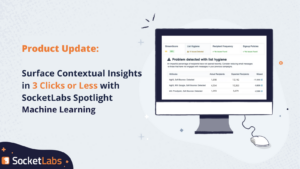What Is an Email Blocklist?
An email blocklist includes all the IP addresses or domains that ESPs detect ISPs as sources of spam. When your address is in a blocklist, the email delivery service rejects the message, resulting in a hard bounce. When ISPs repeatedly get spam alerts from these addresses, blocklists can be permanent.
Email blocklists are also called email blacklists, The email industry as a whole is moving away from using the term “email blacklist” and replacing it with the term “email blocklist”.
How to Avoid an Email Blocklist?
It’s important to avoid blacklists and blocklists because repeated listings can lead to permanent delivery issues. Sometimes it’s by accident, sometimes it’s someone else from your IP address, and sometimes it’s your email marketing practices. If you don’t want to be mistaken for spammers or bots:
- Make sure your email content doesn’t have words that can trigger spam filters
- Avoid buying, scraping, or cold-emailing other addresses. Some of them are spam traps, and a high bounce rate (10%+) can put you on the blocklist for a few weeks.
- Make it always easy to unsubscribe from your list. It’s not worth reducing unsubscribes to at the cost of spam reports.
- Switch to a dedicated hosting service. Shared hosting is the default and most popular, but it increases the risk of losing IP reputation. For example, spam complaints might come from another email sender with the same server IP address.
- Regularly practice email list hygiene, whether it’s removing inactive subscribers or emails with typos.
- Use opt-in forms on your website to comply with anti-spam regulations and improve open rates.
- Use HTTPS on your website. If it’s HTTP, email service providers often send it to the Spam folder and label it in red as Suspicious.
- Ask subscribers to move your first emails to the inbox or mark them as Not-Spam.







